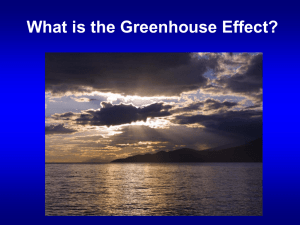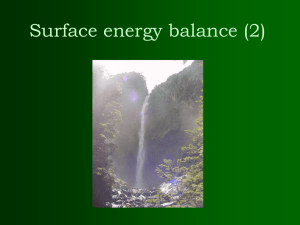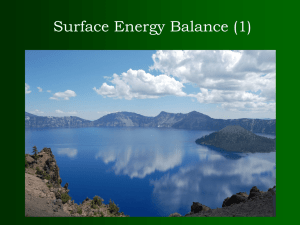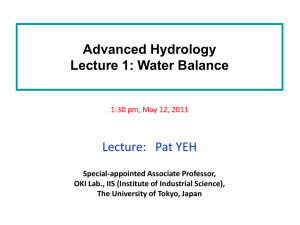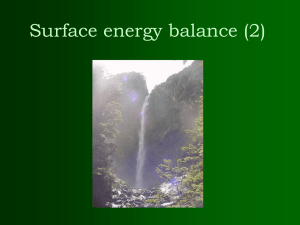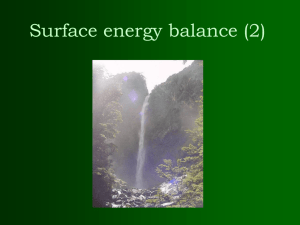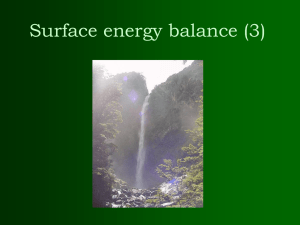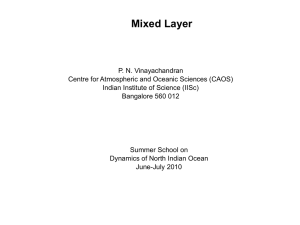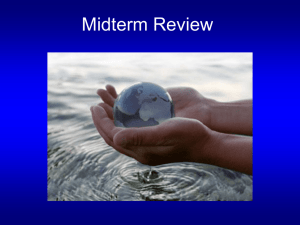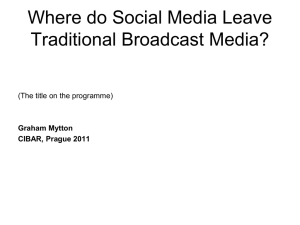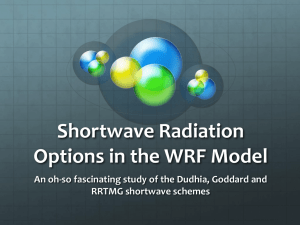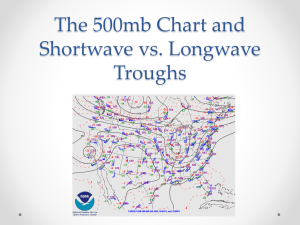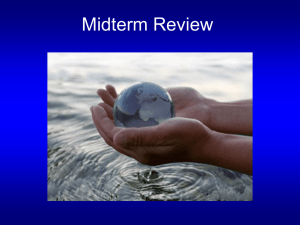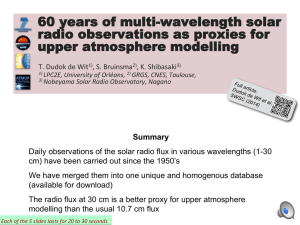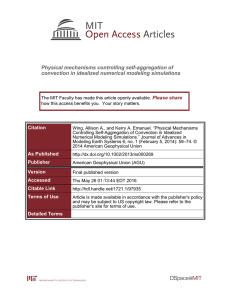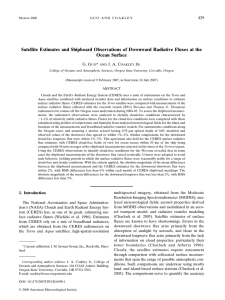The greenhouse effect
advertisement
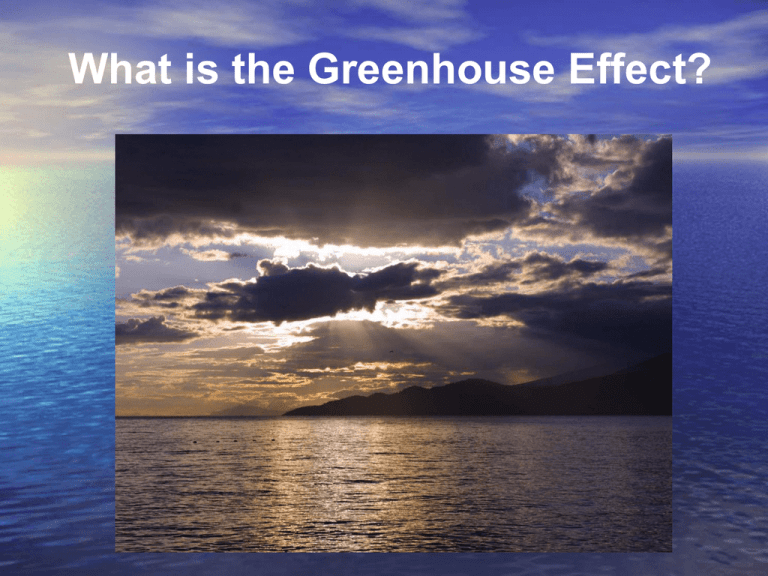
What is the Greenhouse Effect? Review of last lecture – What is energy? 3 methods of energy transfer – The names of the 6 wavelength categories in the – – – electromagnetic radiation spectrum The wavelength range of Sun (shortwave) and Earth (longwave) radition The two basic motions of the Earth What causes the four seasons: the 23.5 degree tilt of the Earth’s axis, and the 3 ways it affects the solar insolation (change of length of the day, beam spreading, beam depletion) Satellite Measurements of the Earth’s Radiation Budget NASA’s Earth Radiation Budget Satellite (ERBS) 1985-1989 Earth’s energy budget (averaged over the whole globe and over a long time Yellow: shortwave Red: longwave Sensible heat 7% Net Longwave 21% Latent heat 23% • At the top of the atmosphere: • Incoming shortwave = Reflected Shortwave + Emitted longwave At the surface: Incoming shortwave = Reflected shortwave + Net emitted longwave (emitted - incoming) + Latent heat flux + sensible heat flux Atmospheric influences on radiation Reflection Scattering Absorption (absorber warms) Atmospheric Absorption - The Greenhouse Effect Transparent to solar (shortwave) radiation Opaque to earth’s (longwave) radiation Major GH gases: CO2, H20(v), CH4 Recent change of greenhouse gases Deuterium (Temperature) • Global atmospheric concentrations of CO2 and CH4 have increased markedly as a result of human activities since 1750 and now far exceed pre-industrial values determined from ice core measurements spanning the last 650,000 years! The importance of methane (CH4) • 23 times more powerful as a greenhouse gas than CO2 • The livestock sector is a major player, which accounts for 35-40% global anthropogenic emissions of methane (their burps!) • The livestock sector is responsible for 18% of total greenhouse gas emissions • Therefore, consuming less meat can help reducing global warming than not driving cars. Video: The greenhouse effect • http://www.youtube.com/watch?v=ZzCA60Wno Mk Atmospheric Scattering 3 Types of Scattering: 1. 2. 3. Raleigh Mie Non-Selective A discussion of each type follows… Rayleigh Scattering • • • involves gases smaller than insolation wavelength scatters light in all directions most effective at short wavelengths (violet, blue)… hence, blue sky The Earth has an atmosphere. So it has Rayleigh scattering and its sky appears blue The Moon has no atmosphere. So it has no Rayleigh scattering and its sky appears dark • Rayleigh scattering also explains reddish-orange sunsets when light travels through thick slice of atmosphere Monet: Impressions, Sunrise 2) Mie scattering – involves aerosols (e.g. dust, smoke) larger than gas molecules – forward scatter – equally effective across visible spectrum – explains hazy, gray days 3) Non-selective scattering – Happens when atmospheric particles are much larger than the wavelength of incoming radiation (e.g. water droplets in clouds) – Act like lenses; scatter all wavelengths equally to create a white appearance – That’s why clouds appear white Surface sensible and latent heat fluxes • Both are turbulent (noisy) fluxes related to conduction and • • • • convection. Both proportional to surface wind speed. Sensible heat flux is dry flux from warm to cold regions Latent heat flux (also called evaporation) is wet flux from wet to dry regions Important for hurricane amplification Surface Wind From NOAA ESRL Summary: Earth’s energy budget Yellow: shortwave Red: longwave Sensible heat 7% Net Longwave 21% Latent heat 23% • At the top of the atmosphere: • Incoming shortwave = Reflected Shortwave + Emitted longwave At the surface: Incoming shortwave = Reflected shortwave + Net emitted longwave (emitted - incoming) + Latent heat flux + sensible heat flux Summary • Earth’s energy balance at the top of the atmosphere • • • • and at the surface. What percentage of solar energy is absorbed by the surface? Atmospheric influences on radiation (3 ways) What cause the greenhouse effect? What are the major greenhouse gases? Why is methane important? The three types of atmospheric scattering. What causes the blue sky? Why causes the reddish-orange sunsets? Sensible heat flux (dry flux from warm to cold regions) and latent heat flux (wet flux from wet to dry regions). Both proportional to surface wind speed
